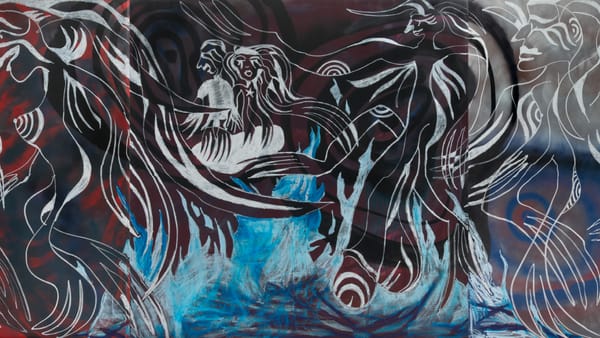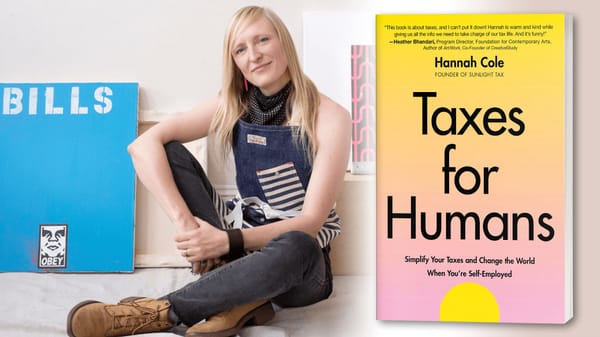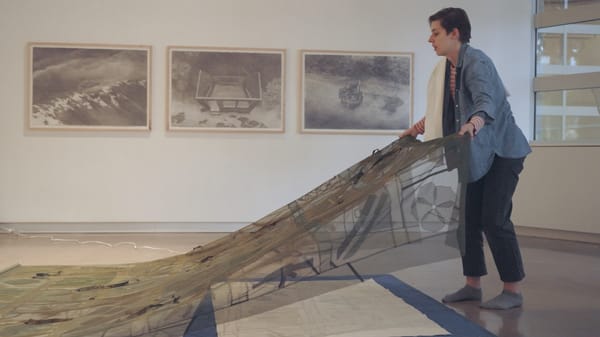Sculpting the Shapes of a Monochrome Landscape
CHICAGO — The stated aim of Scaped, a group exhibition at the A+D Gallery, is to create an "artistic ecosystem" of artworks that play with the idea of landscape primarily by removing color and offering a catalogue of various shapes and objects in monochrome.
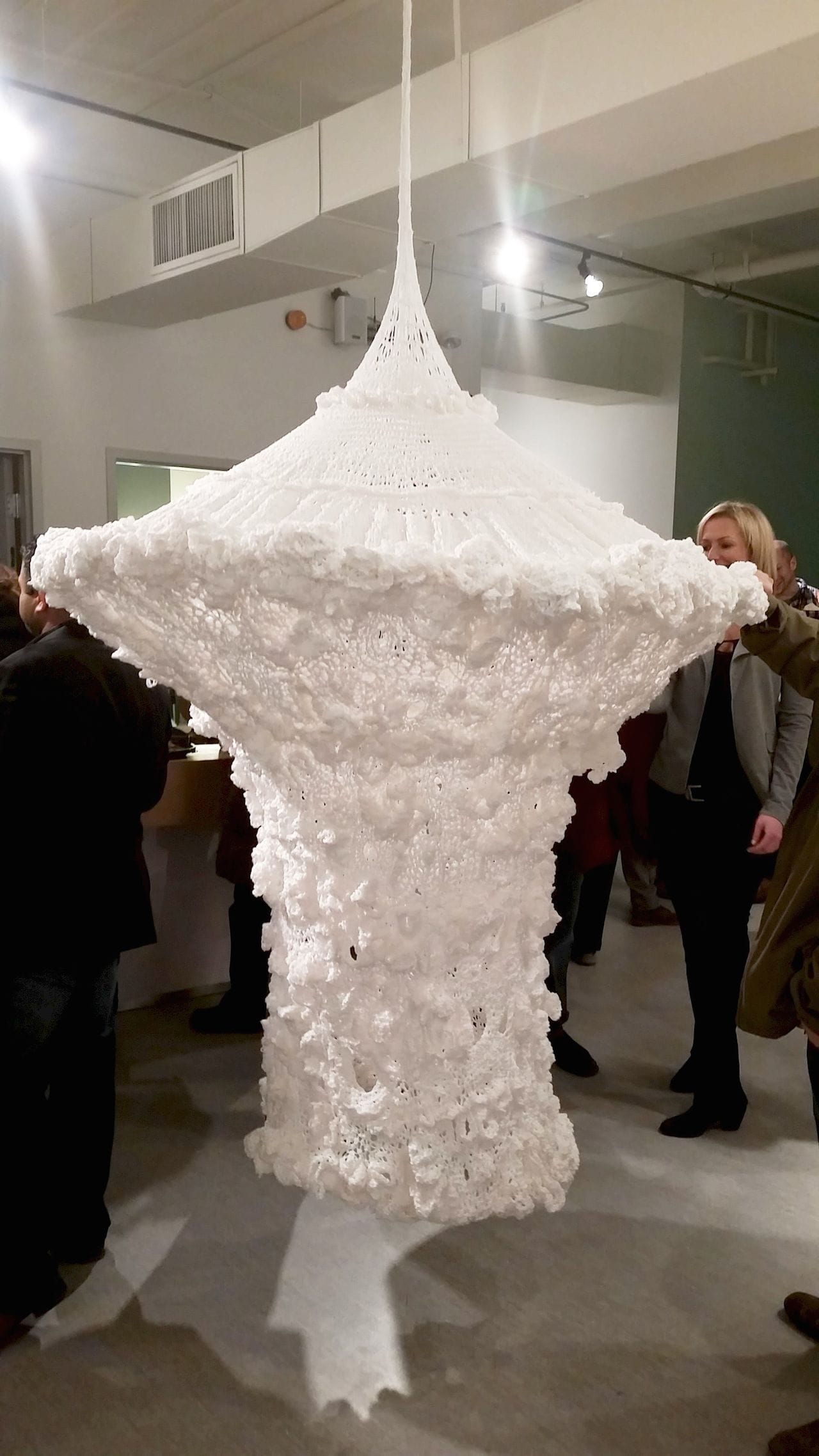
CHICAGO — The stated aim of Scaped, a group exhibition at the A+D Gallery, is to create an “artistic ecosystem” of artworks that play with the idea of landscape primarily by removing color and offering a catalogue of various shapes and objects in monochrome. But instead I ended up feeling that the works were more a straightforward exploration of surface and texture.

Next to the window, facing out onto the street, is Kate McQuillen’s “White Sands,” made from tissue paper that billows up above at head’s height and is lit from within, suggesting clouds, or foam, or a giant marshmallow. Something that is both substantial and pliant, anyway. Behind this work is a partition wall, placed at an angle with the northern gallery wall, that appears to be gradually peeling away, revealing darker smudges and marks beneath the white surface, as though defaced. The drywall is in fact an installation created by artist Dan Hojnacki who sanded down the material to reveal its underlying makeup, a process that he outlines in a wall print on display. There’s a potted plant hanging from the edge of the partition wall, too — a somewhat unnecessary underlining of the otherwise well-made point about the collision of the manmade and the natural, the real and the artificial.
Placed on the floor nearby is an arrangement of flat, mainly ovoid glass shapes, gleaming like transparent stepping stones, though originally made by artist Kim Harty to hang on a wall. If you were to walk on them, you would arrive at a yarn piece by Brent Fogt, dangling from a long stem attached to the ceiling and stretching out into a gazebo-like structure that the shorter members of the opening night crowd were encouraged to enter. This was indeed a kind of “immersive experience,” to quote the exhibition’s intent again.
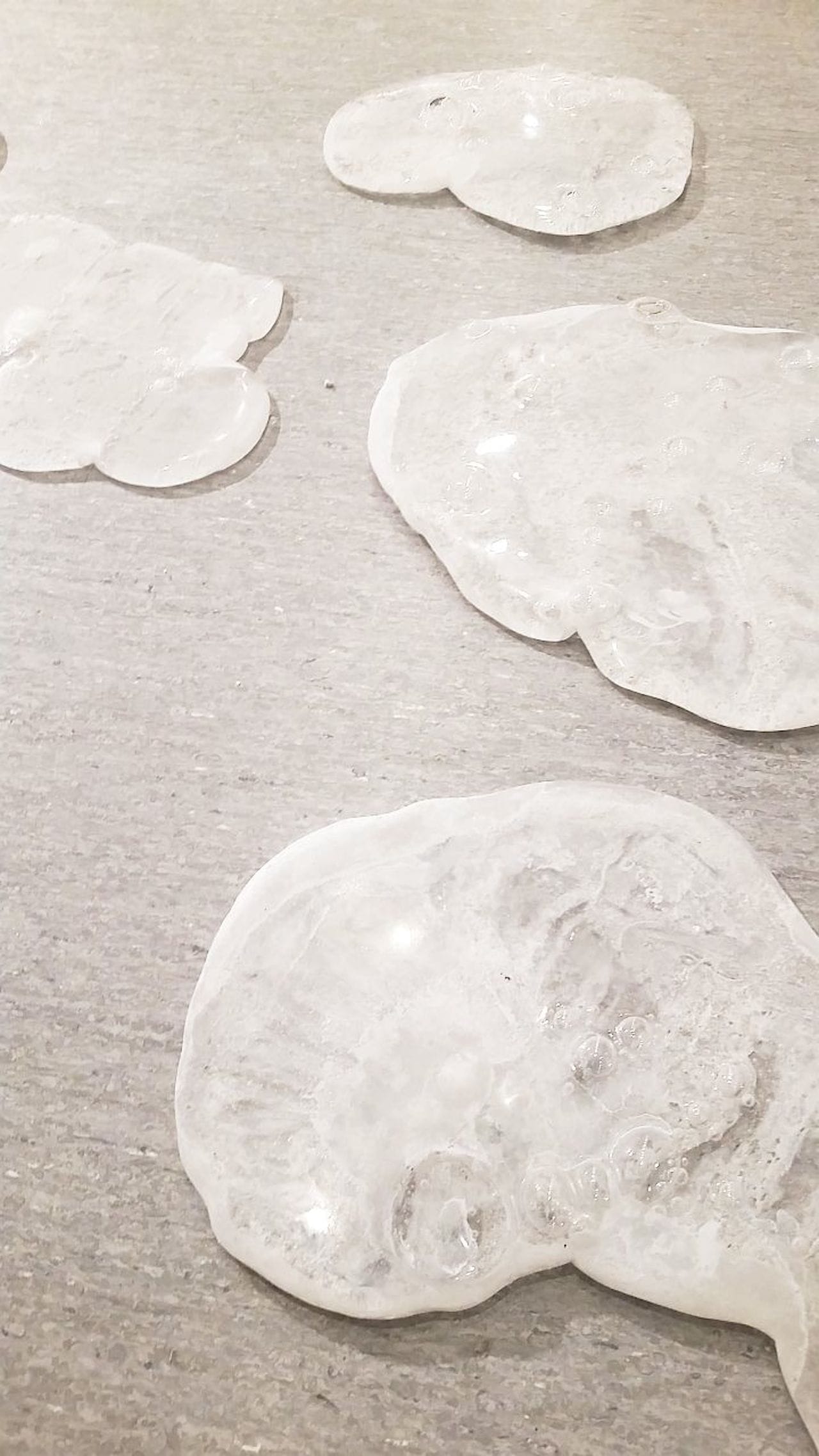

The largest space in the gallery is given over to a 2-channel video by the duo known as Luftwerk. The piece, titled “IN_VERSION” (a title that, with its insertion of an underscore to create a Derridean play of meaning, almost guarantees the piece’s appearance in a contemporary gallery somewhere), is a giant moving wallpaper of colorful patterns, which seems to cheat the monochromatic theme of the show. Reading the accompanying text for the piece revealed some useful information (unusual in the modern gallery context, I find): the first projection on the wall is white light, comprising all colors in the spectrum, and those colors and patterns are triggered when bodies stand in front of the second projected beam.
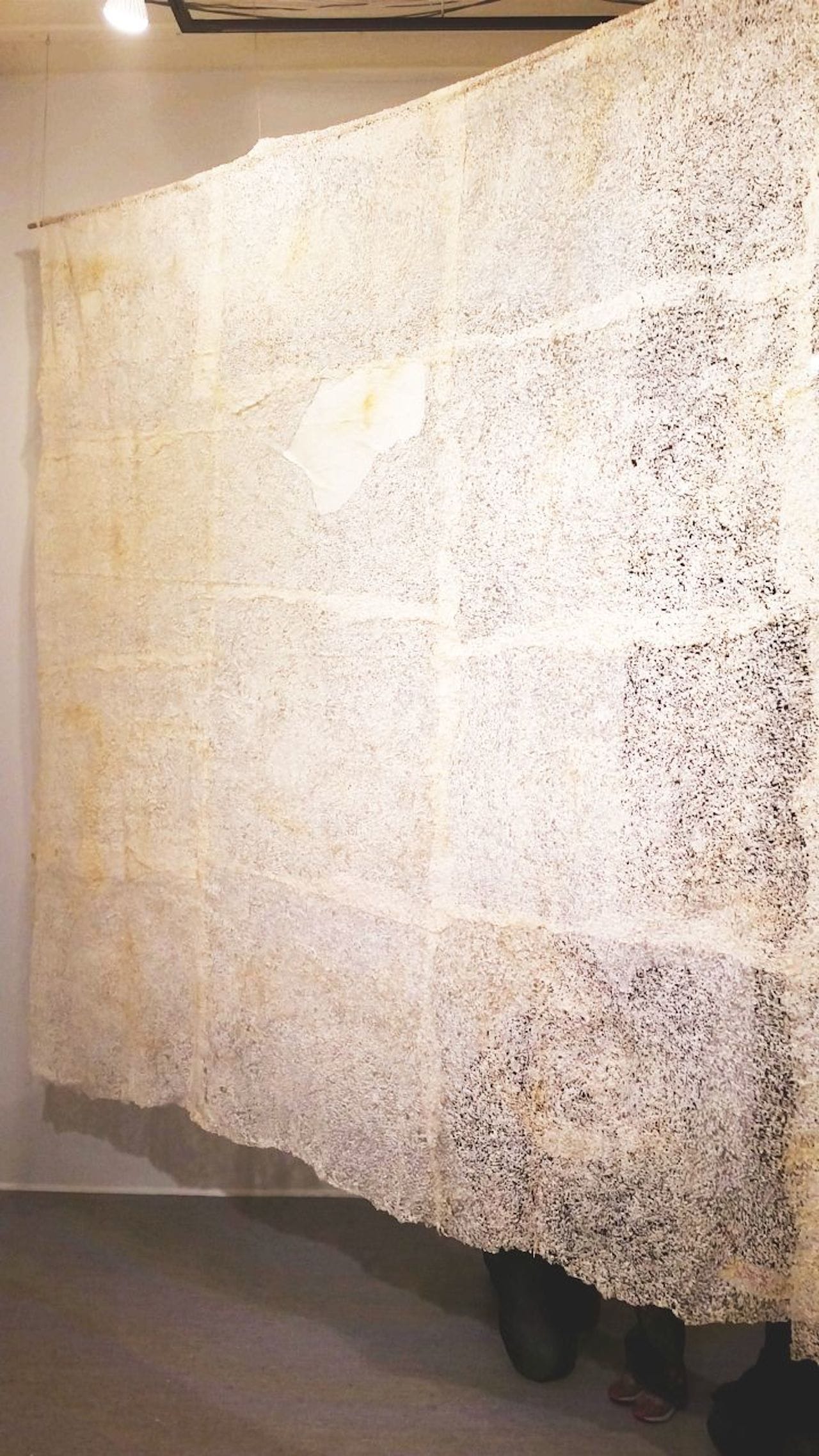
The best work on display, both for its intrinsic merits and because it seems to fit the slightly opaque theme of the show most closely, is by Neha Vedpathak. Titled “A Hint of Light (Rain),” it appears to be a lace curtain, about 9 feet by 11 feet, hanging from the ceiling next to the “defaced drywall” piece. Vedpathak creates the textures by picking at the surface of Japanese paper with a pushpin, a process that she calls “plucking” and which can take many months to produce a definitive form. Small areas of paper are left “unplucked,” creating contrasting shapes and tones within the latticework effect, which appears both solid and transparent at the same time. It’s a beautiful object to stand before and look at, and immerses you more than the other pieces in the show by forcing you to move in closely, to scrutinize a delicately constructed landscape of efflorescent paper.
The curator MK Meador’s aim of exploring different physical manifestations of landscape through installation seems perfectly cogent when you read about it, but the work on view itself seems to exist on a parallel track. It’s a minor point, easily solved by confronting the pieces in the show on their own terms, and enjoying the skillful manipulation of varied materials.
Scaped continues at A+D Gallery (619 South Wabash Avenue, Chicago) through April 11.

